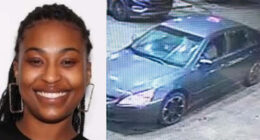Share this @internewscast.com
Cath Virginia is the lead designer at The Verge, responsible for creating illustrations and collages for our articles. She also occasionally engages in feature designs for pieces such as 2004 was the first year of the future—which earned the 2025 ASME Award for Best News and Entertainment Design—How the Stream Deck rose from the ashes of a legendary keyboard, and The Lurker. “Additionally, I crafted the branding for Notepad by Tom Warren and recently revamped the appearance of Verge Deals,” she shares.
Aside from this remarkable work, Cath engages in a lot of sewing. Therefore, when I inquired about one of her favorite gadgets, she mentioned her Brother 1034D Serger. If you’re unfamiliar with what a serger is (as I initially was), continue reading.
What exactly is a thread serger?
A serger, otherwise known as an overlocker, is a sewing machine typically used in garment production. It features two needles and can utilize up to four threads concurrently to produce loops and finish the edges you find inside most knitwear, such as T-shirts and leggings. It is also equipped with a knife that trims the fabric edge as it sews, resulting in a neat and professional finish.
When did you buy this one, and what went into the decision?
I bought this one this past March as a birthday and tax return present. I’ve been wanting one for a while, because I sew a lot of clothes. I’m picky about style and, being fat, have a hard time finding clothes I like that actually fit me. I also love wearing knits because they’re comfortable, and traditional sewing machines aren’t intended primarily to sew knit garments, which need to have stretchy seams. You can use a zigzag stitch to achieve a stretch in your seam, but the serger sews and cuts all at once, as well as finishes the inside edges, so it saves a lot of time.
In choosing a serger, I wanted one that was easy to thread, had an adjustable free arm for sewing cuffs and sleeves, and could sew multiple layers of fabric at a time. I watched a bunch of YouTube reviews of sergers and found this one to be pretty affordable — and it checked my boxes. It also got better reviews than its cheaper sibling, the DX. I was intimidated by it at first because four spools of thread is kind of scary. But it has clearly labeled and color-coded instructions for threading and comes with a manual, so I learned it and had it down in under half an hour.

What do you usually create with it?
So far, I have hemmed a couple shirts and made a maxi skirt (with pockets!) and a crop top. That was after a long and frustrating period trying to learn how to use it. I also dulled two different knives, learning that you can’t sew over pins with a serger because there is a big metal knife chopping your seam off.
What do you like about it?
Sometimes when you’re sewing knits on a traditional (lockstitch) machine, the edges become unintentionally ruffle-y (due to its one measly feed dog, which is the moveable plate that pulls the material through from stitch to stitch). This can make your piece look pretty weird and bad. Another great thing about this serger is that it has something called differential feed, which uses two feed dogs to sew your fabric together. It can be adjusted to feed one piece of fabric faster or slower, so it will flatten out your wobbly knitted seams or can be used to create a lettuce hem. It also comes with a gathering foot, which can be used to gather and sew (intentional) ruffles!
Is there anything about it that you dislike or that you think could be improved?
This is actually on me for not doing quite enough research, but when I bought it, I was excited to finally be able to do the coveted two-thread coverstitch you see on the hems of T-shirts and other knit stuff, only to find out you actually need a whole other machine that literally only does that one thing. That was disappointing to find out, but to compensate, the serger does actually come with a blind hem foot that you can use to do an okay impression of one. It’s kind of a finicky stitch to get right, though, because you’re sewing from the wrong side of the fabric, and I had to do quite a few samples to test it out before I used it on any garments.
Who would you recommend it to?
If you sew a lot of knitwear clothing, it can be a really useful tool for leveling up your garments and being a bit more efficient! It’s not a total replacement for a lockstitch sewing machine but I’m really liking it so far. Don’t be too intimidated by the four threads: they are your friends. And don’t try to sew over any of your pins.


$280
Designed for finishing the edges and hems of a wide range of fabrics, especially linens and stretchy fabrics, and for creating ruffles and decorative edges.







